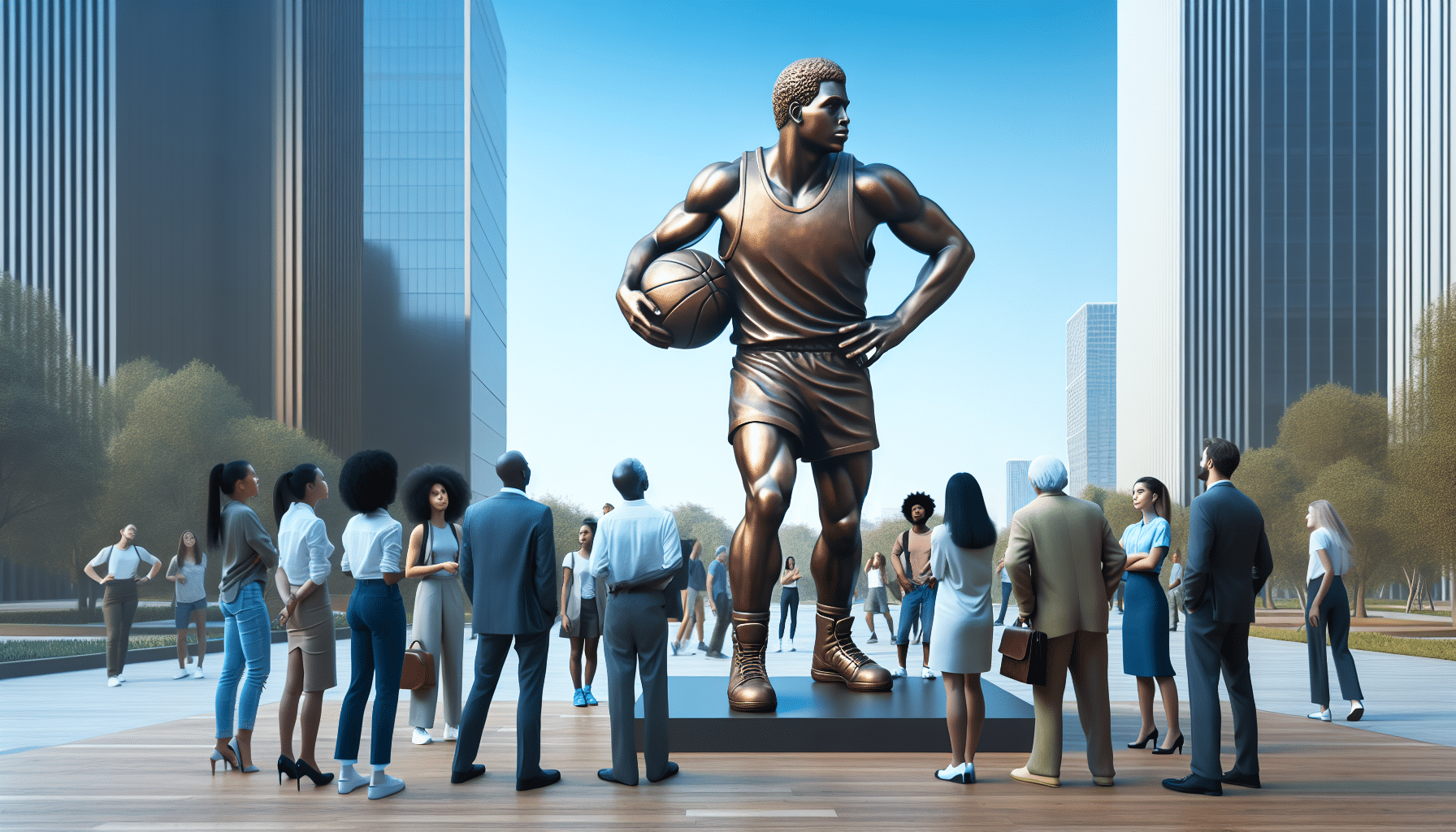In the realm of sports, athletes are often immortalized through various forms of art, be it murals, paintings, or statues. Recently, a statue of NBA legend Dwyane Wade became the center of an unexpected controversy. While intended as a tribute, this piece has sparked a heated debate within the art and sports communities. The artist who created the Dwyane Wade statue stands by his work amid a storm of criticism, highlighting the subjective nature of art and the passion it can ignite.
Artistic Representation and Sports Heroes
Sculptures of sports icons have long been used to recognize their contributions, both on and off the field. The bronze statue of Dwyane Wade, designed to capture the essence of his athletic excellence, intended to pay homage to one of the Miami Heat’s greatest players. However, reactions have been mixed, with some fans appreciating the tribute and others questioning its likeness to the real-life sports figure.
The importance of representation in sports art cannot be overstated. Statues serve not just as artistic endeavors but as cultural landmarks, signifying the achievements and memories associated with the athletes they represent. Feedback from fans and critics alike underscores this, playing a crucial role in how these pieces are perceived in the public domain.
The Artist’s Vision
The artist behind the Wade statue remains firm in his commitment to the piece, stating that he sought to capture more than just Wade’s physical attributes. Instead, his work aims to reflect the spirit, determination, and influence Wade has had over the sport. This perspective aligns with the belief that art should evoke emotion and provoke thought, even if it risks polarizing opinions.
According to the artist, many details in the statue are symbolic. The pose, expression, and even the materials used all contribute to a narrative that extends beyond mere physical appearance. “It’s about more than capturing an exact likeness,” he explains. “It’s about capturing the soul and legacy of the athlete.”
Public Response and Likeness Criticism
The intensity surrounding the likeness of the Dwyane Wade statue emphasizes how passionate people are about their sports heroes. Often, public reaction to such artworks reflects broader societal values and opinions on representation. As with any art piece, some spectators resonate with the abstraction, while others demand realistic depictions.
Critics of the statue have pointed out perceived inaccuracies in facial features and proportions. These critiques highlight the expectation that statues should serve as near-perfect replicas of the individuals they portray, much like a photograph. However, the artist argues that an exact likeness isn’t always the goal in art, especially in sculptures meant to convey more profound themes.
An article from Sports Illustrated provides insight into how similar instances have occurred with statues of athletes and public figures, illustrating that while some works evoke pride, others stir controversy.
The Role of Subjectivity in Art
One of the key discussions this statue has sparked involves the subjectivity of interpretation in art. Just as athletes display unique styles and skills on the court, artists also reflect their individuality in their work. The debate serves as a reminder of the diverse range of tastes and expectations within audiences.
For artists putting themselves in the public eye, criticism is an inevitable part of their profession. The artist behind Wade’s statue embraces feedback as part of a broader dialogue about the intersection of art and sports. To him, every comment—positive or negative—extends the narrative and understanding of his work.
Conclusion: Embracing Diverse Artistic Voices
The controversial Dwyane Wade statue offers a case study in the balance of artistic expression and public expectation. It ignites a broader conversation about how we celebrate and remember our heroes. The artist stands firm in his belief that his work aims to immortalize a legend’s spirit rather than just provide a physical replica.
While some fans might prefer statues to be photo-realistic, others appreciate the broader interpretive approach. As the discussion around the statue continues, it serves as a testament to the powerful intersection of art and sports culture.
As seen in past controversies, such as the Guardian’s coverage on statues of public figures, these debates aren’t new. Ultimately, each piece of art has its place in inspiring dialogue, compelling us to reflect on the figures we admire and the diverse ways through which we preserve their legacies.

